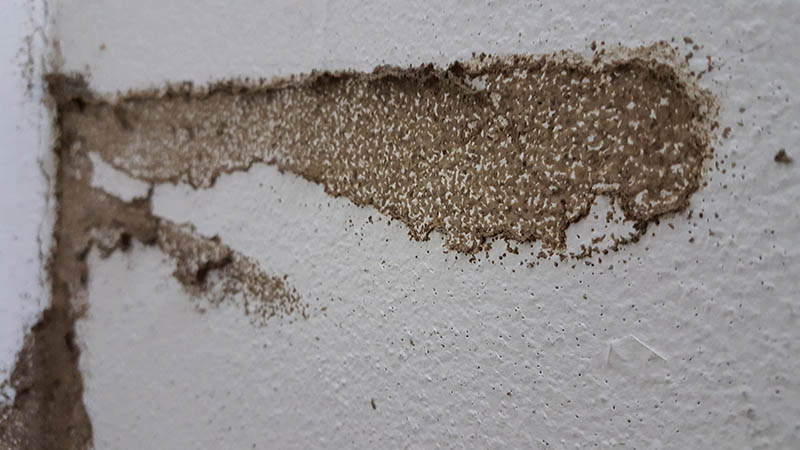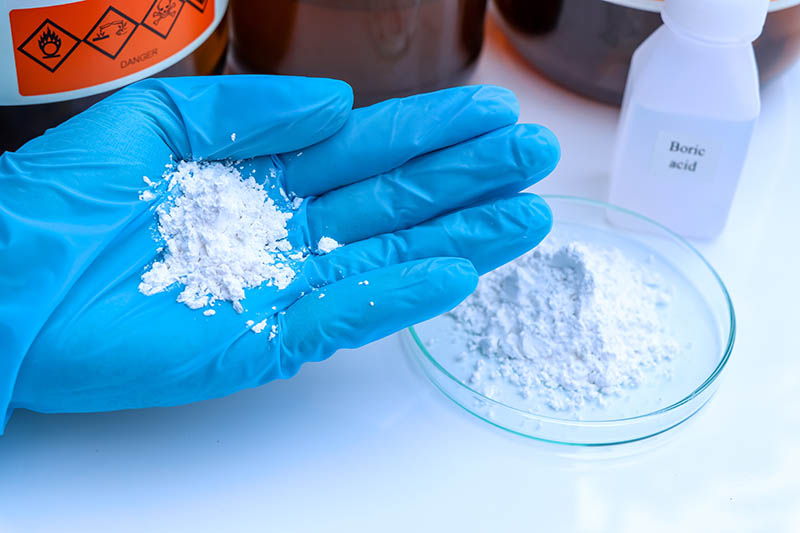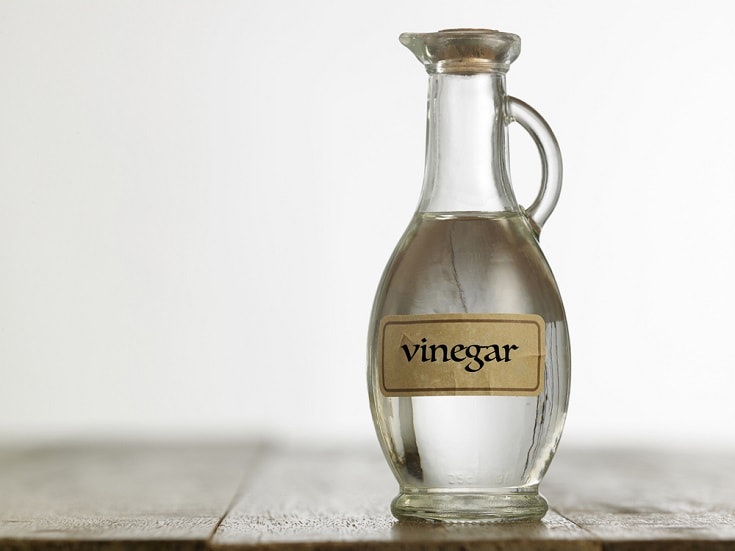Do Termites Eat Drywall? What You Need to Know
-
Pete Ortiz
- Last updated:

Most of us know that termites eat wood. They can ruin wooden furniture and wooden walls as they hunt for and consume cellulose, which is a naturally forming organic compound. Animals don’t produce cellulose, but plants, algae, and even some bacteria do produce it, and it is still found in dead plants. Drywall, which is also called sheetrock, is made of plaster encased in paperboard and because paperboard contains cellulose, it is a target for termites. You may notice faint lines in the drywall and paint can become bubbled and may peel off.
About Termites
Termites are small insects that, although beneficial to the ecosystem, can be a nuisance if they nest in trees, furniture, or wooden wall structures. They are colony animals, which means that infestations can be considerable. While an average colony only eats approximately 1.5 ounces of wood a day, by the time you notice their presence, extensive damage may already be done.

What Is Drywall?
Drywall is a type of finishing material that is used to line walls in homes and other properties. It is called drywall because it does not use plaster or other mortar. Although different materials can be used in the production of drywall, it is commonly made with gypsum and wood pulp.
Do Termites Eat Drywall?
Termites will eat any source of cellulose. This includes timber frames in houses, and it also includes the paper typically used to coat drywall.

How Do You Get Rid of Termites Behind Drywall?
Generally, if you have a termite infestation, it is a good idea to get a professional termite control company to eradicate the termites. They have access to and know how to safely use some strong chemicals that make the job quick and easy. However, there are some techniques that you can use yourself.
Find a pest-control specialist in your area, and get free, no-commitment estimates for your project.Consult a PEST-CONTROL expert

The 5 Methods to Kill Termites in Drywall
1. Boric Acid

Boric acid is readily available and can be found in DIY shops, some superstores, and online. It typically comes in powder form. While it doesn’t directly kill the termites, it prevents them from getting any nutrients from the food they eat, so they will die off over a few days. If you are using boric acid indoors, dilute it in warm water, in a spray bottle, and spray the affected area for a week.
2. Cayenne Pepper

If you have cayenne pepper in your kitchen, you can use this to kill off termites in your drywall because it attacks the nervous system of the insects. Unfortunately, cayenne pepper is hydrophobic, which means that it won’t effectively dissolve in water. If you can’t spray the powder where you need it, you can create a paste by mixing some cayenne with vegetable oil. Once you’ve created the paste, liberally apply it to the affected areas.
3. White Vinegar

Vinegar is commonly used for cleaning and as a pest repellent, as well as for cooking and preserving. White vinegar can be mixed with water to create a spray that is easy to apply. Put it in a spray bottle and you can really get the solution into cracks and termite holes. Add some lemon juice to boost its termite-killing power and to improve the aroma.
4. Orange Oil

Orange oil is not harmful to people or pets, but it is harmful to termites. You can buy it already made or make your own from orange peel or rind. It isn’t as powerful as other methods, though, and it will usually only prove effective if you have just found a new infestation.
You will need to ensure that you hit the affected areas directly with orange oil but if you have some laying around or are worried about the effects of other solutions on pets, orange oil is a safe alternative.
5. Cardboard Bait

Termites love cellulose and they prefer sources of food that are easy to find and digest. Place pieces of cardboard near infestations, wait for the termites to feast on the cardboard, and then remove and burn the bait. This isn’t a permanent solution, and you will need to keep reapplying the bait, but it can be an effective way of bringing a serious infestation under control.
Can Termites Go Away on Their Own?
Theoretically, termites may leave drywall of their own accord. Generally, they will do this because something in the local environment has caused them to leave or they have a better source of food nearby. However, while a termite colony might leave your drywall of its own volition, it is unlikely that it will do so until the wall is ruined. It is better to try and take some remedial action to bring the population under control.
In Conclusion
Termites are a pest, and they can cause considerable damage to furniture and even to walls. While we typically think of them as being a problem for wood and wooden materials, they will eat any source of cellulose, which includes the paper that covers drywall. And some drywall is made from wood pulp which absolutely attracts these tiny insects.
There are some natural and potentially effective methods to kill termites yourself, but if you have a serious infestation or your own termite-killing methods have proved ineffective, you should get professional extermination assistance.
- https://www.abchomeandcommercial.com/blog/do-termites-eat-drywall/
- https://www.terminix.com/termite-control/can-termites-damage-drywall-sheetrock/
- https://www.orkin.com/pests/termites/damage/termite-wall-damage
- https://experthomereport.com/killing-termites-naturally-tips-that-actually-work/
- https://www.britannica.com/technology/drywall
- https://www.britannica.com/animal/termite
- https://www.dominionpestcontrol.com/q-a-termites-returning/
Featured Image Credit: Roy Buri, Pixabay
Contents


